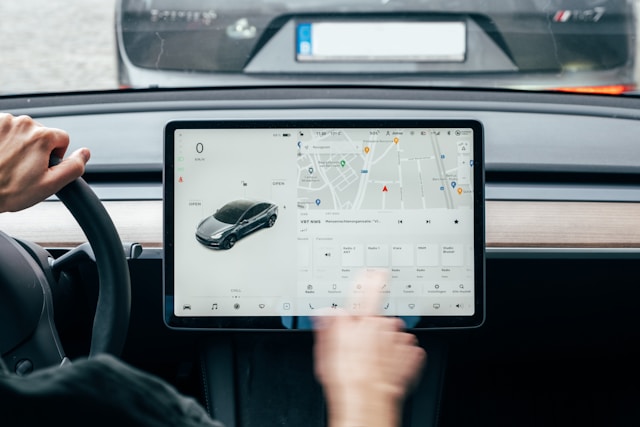In today’s dynamic market, understanding consumer behavior is critical to developing products that not only meet customer needs but also exceed their expectations.
By leveraging behavioral insights, you can design products that resonate deeply with consumers, ensuring higher satisfaction and loyalty. This section explores how you can integrate behavioral science into your product development and marketing strategies.
Consumer-Centric Design
Consumer-centric design is about creating products that naturally fit into consumers’ lives, addressing their needs and aligning with their behaviors.
Here’s how to implement this approach:
1. Understand Mental Models
- Conduct user research to understand how consumers think about and interact with similar products
- Use techniques like card sorting and user journey mapping to visualize consumer thought processes
2. Leverage Behavioral Economics Principles
- Apply the “nudge theory” to guide users towards desired actions within your product
- Use the “IKEA effect” to increase perceived value through user participation in the product experience
3. Design for Cognitive Ease
- Implement intuitive interfaces that reduce cognitive load
- Use familiar patterns and conventions to increase usability and adoption
Tesla has revolutionized the automotive industry with a consumer-centric design approach, ensuring its products seamlessly integrate into consumers’ lives by addressing their needs and aligning with their behaviors.
Here’s how behavioral scientists might approach Tesla’s strategies:
1. Understand Mental Models
User Research: Conduct extensive user research to understand how consumers think about and interact with electric vehicles (EVs). This includes analyzing consumer expectations, concerns about range anxiety, and preferences for in-car technology.
Techniques: Using techniques like user journey mapping, Tesla visualizes how potential customers experience the process of owning and driving an EV. This helps identify pain points and opportunities for improvement.
Behavioral Science Concept:
Mental Model Theory: This theory posits that users form mental representations of how systems work based on their past experiences and knowledge. By aligning product design with these mental models, Tesla ensures a more intuitive user experience. For instance, Tesla’s introduction of the Supercharger network aligns with the mental model of traditional fueling stations, reducing range anxiety by making EV charging as convenient as refueling a gasoline car.
2. Leverage Behavioral Economics Principles
Nudge Theory
Apply the nudge theory by designing its cars to guide users towards environmentally friendly behaviors. For example, the autopilot feature encourages safer driving practices by providing gentle alerts and corrections.
IKEA Effect
Leverage the IKEA effect by involving users in the product experience. Features like customizable driving profiles and over-the-air software updates make users feel more invested in their cars.
3. Design for Cognitive Ease
Intuitive Interfaces
Tesla’s in-car interface is designed to be highly intuitive, reducing cognitive load. The central touchscreen controls most of the car’s functions, using familiar touch gestures and clear visual feedback.
Familiar Patterns
Incorporates familiar patterns and conventions from smartphones and tablets into its car interfaces, making it easier for users to adapt.
Designing for cognitive ease aligns with the cognitive load theory, which suggests that simpler interfaces that reduce mental effort lead to better user experiences. Tesla’s streamlined and intuitive design minimizes the cognitive load on drivers, enhancing usability and adoption.

Nike has successfully implemented consumer-centric design in its Nike+ Run Club app.
This app is designed to help runners track their progress, set goals, and stay motivated. Here’s how behavioral scientists might approach Nike’s strategies:
1. Understanding Mental Models:
Key Features:
- Personalized training plans
- Progress tracking features
- Social sharing capabilities
Their approach aligns with goal-setting theory, which suggests that setting specific, challenging goals leads to better performance. By allowing users to set and track personalized goals, Nike taps into runners’ existing mental models about progress and achievement.
2. Leveraging Behavioral Economics Principles:
Guide users towards consistent running habits and goal achievement.
- Push notifications for scheduled runs
- Achievements and badges for milestones
- Personalized encouragement messages
Loss Aversion
This leverages loss aversion, a concept suggesting that people are more motivated to avoid losses than to acquire equivalent gains. By showing users their streak of consecutive runs, Nike motivates them to maintain their habit to avoid “losing” their streak.
IKEA Effect
Allow users to customize their training plans and running routes, increasing their perceived value of the app.
- Customizable training plans
- User-created running routes that can be shared with the community
Endowment Effect
This taps into the endowment effect, where people ascribe more value to things they have created or customized. By allowing users to create and share running routes, Nike increases the perceived value of its app.
3. Designing for Cognitive Ease:
Intuitive Interface:
Nike’s app interface is designed to be intuitive and easy to navigate, reducing cognitive load for users.
- Simple, icon-based navigation
- One-tap start for run tracking
- Clear, visually appealing display of run statistics
Cognitive Load Theory
This aligns with cognitive load theory, which suggests that learning and engagement are optimized when cognitive load is minimized. By using a simple interface with clear icons and easy-to-read statistics, Nike reduces the mental effort required to use the app.
Familiar Patterns:
Adopt familiar conventions from fitness apps and social media platforms.
- Swipe gestures for navigation
- Heart icon for liking friends’ activities
- Progress bars for goal completion
Recognition Over Recall
This leverages the principle of recognition over recall, which suggests that it’s easier for users to recognize familiar patterns than to recall how to use a unique interface. By using familiar patterns, Nike makes the app more intuitive and easier to use.
Developing innovative solutions that address real problems for customers is crucial for driving satisfaction and fostering long-term loyalty. By applying behavioral insights, companies can create products and services that not only meet but exceed consumer expectations.
Call to Action
Ready to develop innovative solutions that solve real problems for your customers? Contact us today to discover how our expertise in behavioral insights can help you create products that drive satisfaction and loyalty.
